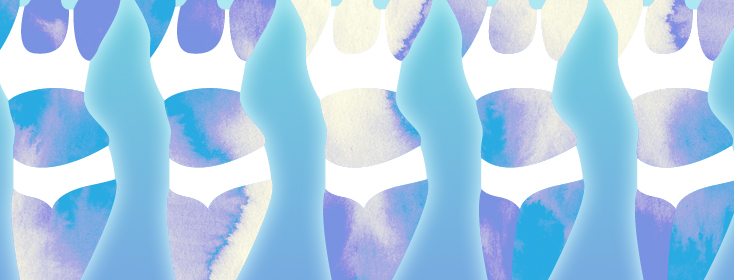Advice For Those Starting Phototherapy
Phototherapy is a popular treatment for psoriasis patients who have exhausted topical treatments, or for whom topical treatments are inappropriate. Years ago, I found myself covered in a full body guttate flare, and it became impossible to keep up with my steroid cream applications. Before moving to methotrexate my Dermatologist agreed to let me try phototherapy. That was back in 2013, and I had a second phototherapy treatment regime in 2017. Here is my advice for those looking to start!
Take a before picture
To complete phototherapy safely, you have to ease yourself in. You’ll probably start with only 2-5 second treatments and build up gradually from there. If you’ve got stubborn psoriasis and thick plaques, it may be many sessions before you notice a difference. Taking a before picture and then consistent photos every week or so can help you to notice positive changes. Maybe your plaques are looking less red, or maybe the ones on your back are clearing up. When starting a new treatment I tend to over-analyze everything, so this really helps me be objective about whether or not the treatment is working.
Choose your undergarments wisely
You may choose to leave your bra and panties on, to wear your watch, or to keep your socks. Whatever you do, make sure it’s the same every time. As I mentioned, you have to slowly build up to longer and longer sessions to prevent burning. If you’ve been wearing boy shorts for the first 6 weeks and then switch to a thong, you will be in for a nasty surprise (think burning butt cheeks). So if you choose to wear underwear, make sure it’s the exact same cut and sitting the same way every time. If you want to wear socks, always wear socks. My choice? I go totally naked and make sure my hair is up in a bun. I’ve been burned too many times before (literally). Note that women are generally not required to cover their genitals, but men are.
Stand in the same position
This is an extension of the previous advice. Legs spread with hands locked behind the head was a good position for me, but your nurse may change it up depending on which areas of your skin are affected. But if you start with your arms by your side, make sure you don’t decide to put them in the air halfway through your treatments.
Remember your goggles and your pillowcase!
At the beginning of your sessions, you’ll likely get fun tanning goggles to wear during each treatment. These goggles protect your eyes from damaging rays (and no, simply closing your eyes will not protect them. Wear your goggles!). Once your sessions start increasing in length, the nurse may also recommend that you start covering your head with a pillowcase if your face doesn’t have any active psoriasis. This is because the skin on your face may be extra sensitive to the rays, so they want you to cover up. For me, it was at the 60 second mark that I had to start bringing a pillowcase.
Moisturize and descale
Phototherapy can dry out your skin (in the same way the sun can), so make sure you moisturize well. You may also consider mild descaling before your appointment to make the treatments more effective (phototherapy can’t work on dead skin, so your thick scales may be delaying healing). On the topic of lotions and potions, make sure to check in advance whether the lotions and soaps you are using are appropriate. Sometimes they contain essential oils or other ingredients that will cause irritation (be especially aware of ingredients that increase photosensitivity). You’ll also need to check with the nurse or the doctor whether you should continue using any prescription topicals during your phototherapy treatment.
Lastly, make sure to discuss any changing symptoms with your nurse or the technician operating the phototherapy booth. They should ask you each time if you’ve had any burning from the previous session, but if they don’t, make sure to speak up. In the same way, you should be open about how your skin is doing. If there’s no change in your psoriasis, they may up your dosage (if your skin isn’t showing any burning or irritation). To the same point, if your skin has almost entirely cleared, tell them that too! There’s little point coming for higher and higher doses if all you need is maintenance. Back in 2013 it took only 2 months before my skin was 100% clear. I was very tempted not to say anything, because I was afraid to stop the treatment. Always be honest with your healthcare providers.

Join the conversation